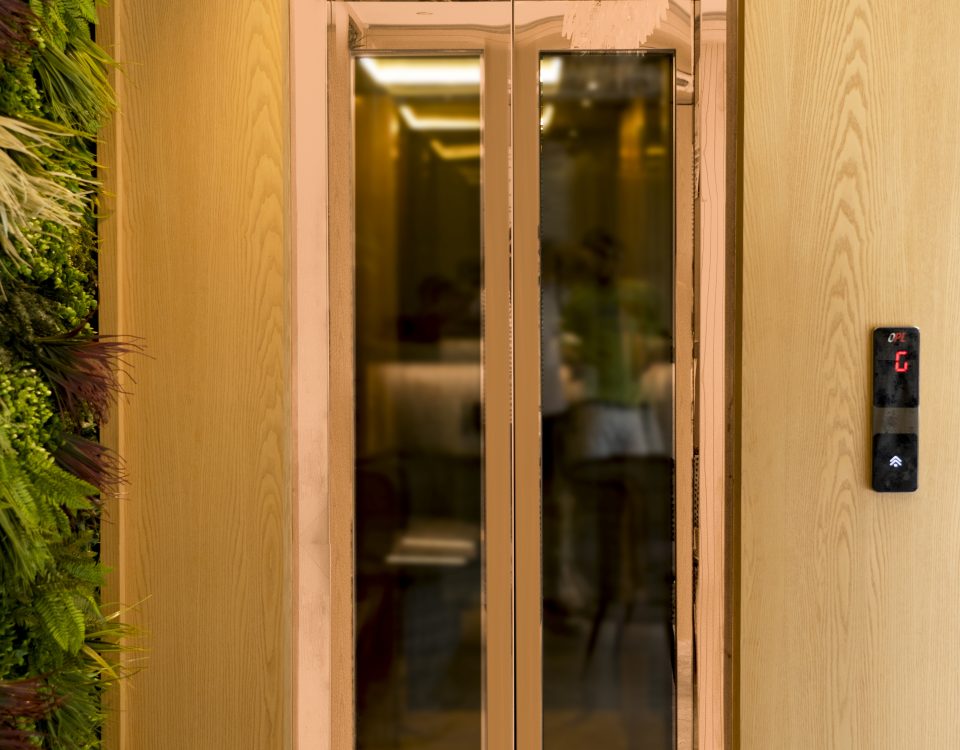
Our Journey in Elevating Experiences – The Story of Oscar Elevator
March 30, 2025
How AI and Automation are Enhancing Elevator Efficiency
March 30, 2025Top Elevator Trends in 2025: The Future of Vertical Mobility
The elevator industry is evolving rapidly, driven by advancements in technology, sustainability, and user experience. As we step into 2025, the future of vertical mobility is being shaped by smart automation, energy efficiency, and enhanced safety features. Here are the top elevator trends to watch out for this year.
1. Smart & AI-Driven Elevators
With the rise of Artificial Intelligence (AI) and the Internet of Things (IoT), elevators are becoming more intelligent and responsive. AI-powered systems can predict maintenance needs, optimize traffic flow, and enhance security, ensuring a seamless passenger experience.
✅ Predictive maintenance reduces downtime.
✅ AI-based traffic management minimizes wait times.
✅ Touchless controls improve hygiene and convenience.
2. Energy-Efficient & Eco-Friendly Designs
Sustainability is a key focus in 2025. Elevator manufacturers are integrating energy-efficient motors, regenerative drives, and solar-powered systems to reduce carbon footprints and lower operational costs.
✅ Regenerative braking systems convert excess energy into reusable power.
✅ LED lighting and standby mode reduce energy consumption.
✅ Green building certifications now require energy-efficient elevators.
3. Destination Control Systems (DCS)
Traditional elevators operate on a first-come, first-served basis, leading to inefficiencies. Destination Control Systems (DCS) use smart algorithms to group passengers traveling to the same floors, reducing travel time and congestion in high-rise buildings.
✅ Optimized traffic flow improves efficiency.
✅ Faster response times enhance user experience.
✅ Fewer stops mean lower energy consumption.
4. Multi-Directional & Ropeless Elevators
The concept of multi-directional elevators is gaining traction, allowing horizontal and vertical movement without cables. Magnetic levitation (Maglev) technology is being explored for future skyscrapers, revolutionizing urban mobility.
✅ Increased efficiency in high-rise buildings.
✅ Space-saving designs for modern architecture.
✅ Faster, smoother, and safer transportation.
5. Ultra-Fast High-Rise Elevators
With the rise of mega-skyscrapers, demand for high-speed elevators is increasing. In 2025, some elevators are expected to reach speeds of over 20 meters per second, significantly reducing travel time in tall buildings.
✅ Advanced air pressure control for passenger comfort.
✅ Enhanced safety systems prevent abrupt stops.
✅ Smart braking technology ensures a smooth ride.
6. Touchless & Voice-Controlled Elevators
In a post-pandemic world, hygiene remains a top priority. Elevators with gesture-based or voice-activated controls are becoming the norm, reducing the need for physical contact.
✅ Mobile app integration for seamless calling.
✅ Facial recognition for personalized access.
✅ Hygienic and futuristic user experience.
7. Augmented Reality (AR) & Virtual Reality (VR) for Maintenance
Elevator maintenance is being revolutionized by AR and VR technologies, enabling technicians to diagnose and repair issues remotely without physical inspections.
✅ Faster troubleshooting reduces downtime.
✅ Digital twin technology creates virtual elevator models.
✅ Enhanced training for technicians through VR simulations.
8. Elevators Designed for Accessibility & Inclusivity
Future elevators are being designed to be more inclusive, ensuring accessibility for people with disabilities and senior citizens. Features include:
✅ Braille buttons & voice navigation for visually impaired users.
✅ Wider doors & spacious cabins for wheelchair access.
✅ Real-time assistance via smart communication systems.




